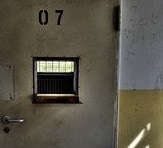Court of Appeal closes the door on workplace claim

Court of Appeal closes the door on workplace claim
Bryan Patterson-Whitaker considers the recent case of Cruz v Chief Constable of Lancashire & Anor [2016] EWCA Civ 402.
The Claimant was a civilian police worker responsible for escorting a drunken prisoner to her cell. Unusually the cell door had not been left fully open. In the course of manoeuvring around the door the prisoner fell to the ground landing heavily on the Claimant’s arm.
The Claimant’s case was that because the cell door was not flush with the wall, the corridor was not maintained in an efficient state and constituted a breach of regulation 5 of the Workplace (Health, Safety and Welfare) Regulations 1992. The judge at first instance rejected the claim on the basis that the partially open door presented no foreseeable risk of injury to the appellant and that it could not therefore be said that the corridor was not maintained in an efficient state. In addition, the judge found that an open door in good working order could be moved aside. It did not therefore constitute a breach of the regulation 17 requirement that traffic routes in a workplace should be suitable for their users.
The Claimant appealed on the basis that the judge had failed to attach appropriate weight to the usual practice of leaving empty cell doors open so as to reduce the risk of hazards.
In dismissing the appeal, the Court of Appeal held that there had to be a degree of realism when assessing whether a particular risk presented a foreseeable risk of injury. Although the risk did not have to approach a probability, it nevertheless had to be real or material. The evidence suggested that a partially open cell door could lead to a modest delay, presenting an enhanced risk to a drunk and disorderly prisoner. However, to breach regulation 5, the risk had to be directed to the worker. There was no evidence that the partially open door had been identified as a risk to the custody officers over and above that inevitably associated with their job. The first instance judge’s decision was not only well within the ambit of reasonable decision-making, it was obviously correct.
The Court further held that, in accepting the judge’s conclusion as to regulation 17, the Claimant’s argument on regulation 5 was irreparably wounded. If a partially open door did not render a corridor unsuitable for traffic, it could not mean that the corridor was not maintained to the standard required by regulation 5.










